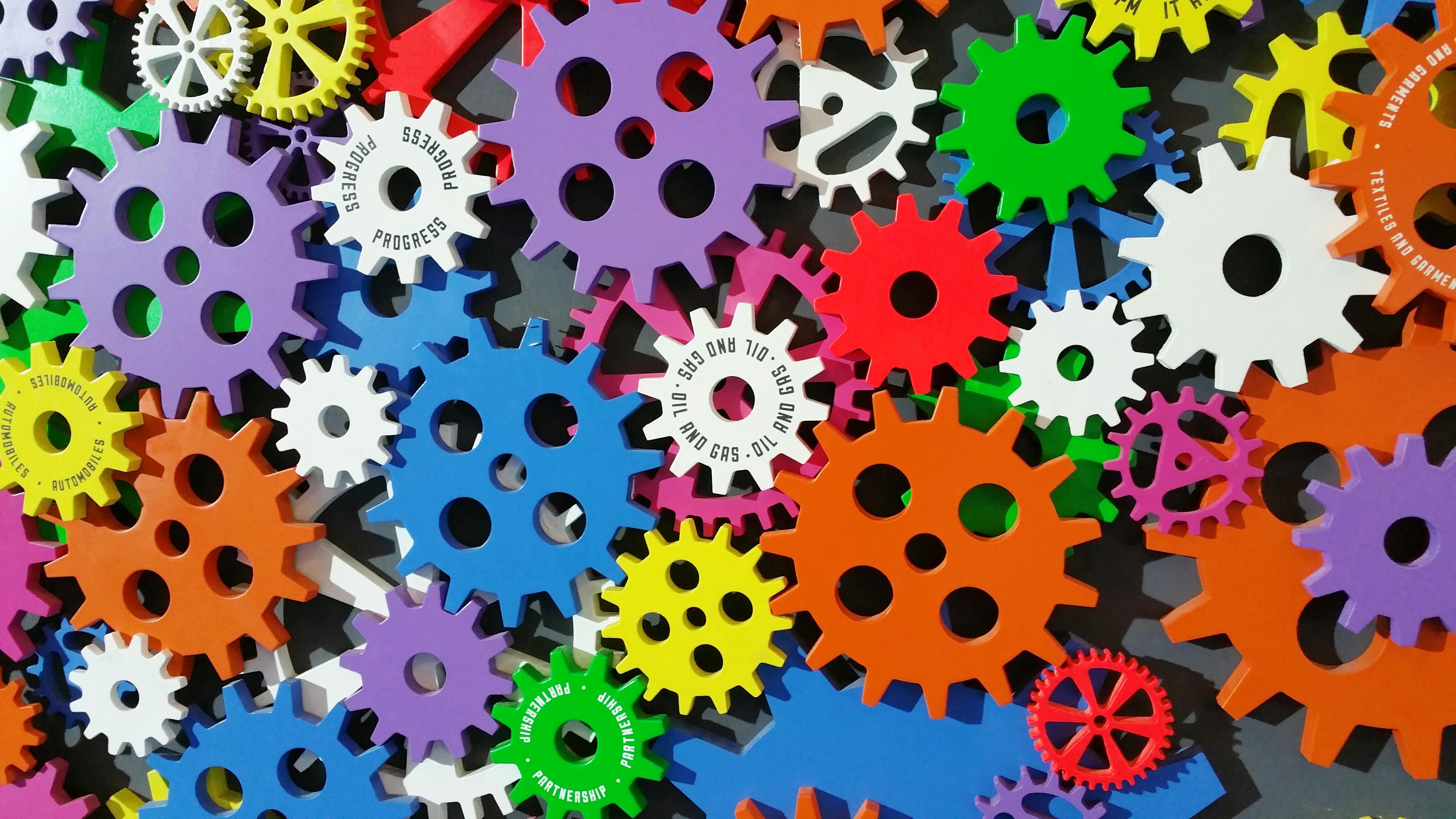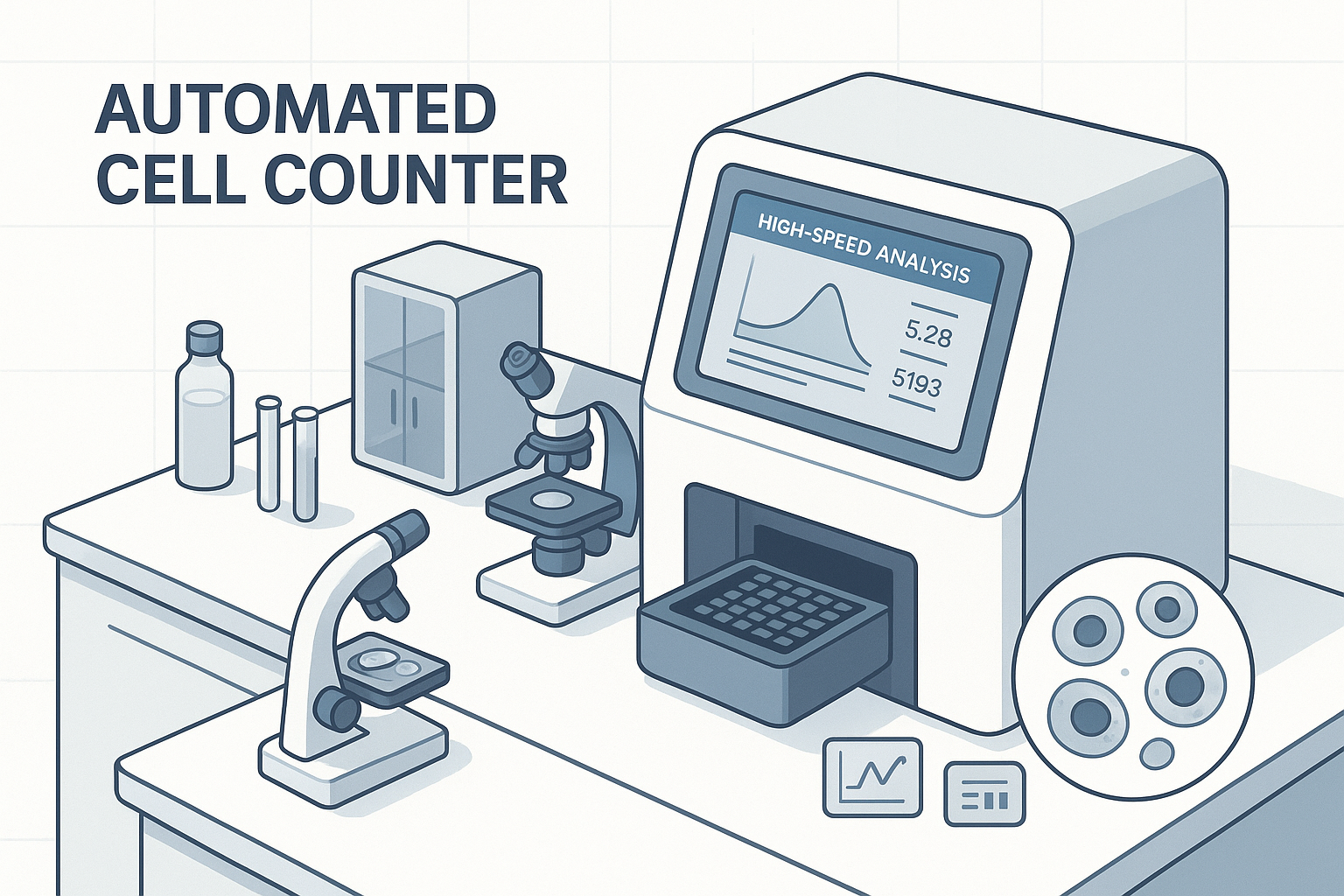Save Time and Reduce Errors: The Benefits of Automated Cell Counters

In the fast-moving landscape of dental and clinical laboratories, every second matters. Technicians and researchers across the Greater Toronto Area (GTA) are continually pressed to deliver accurate results in less time and under increasing regulatory pressure. For those still counting cells manually, it can feel like you're working against the clock with outdated tools. The good news? You don’t have to stay stuck in slow, error-prone workflows.
Introducing the power of automation in cell counting — a game-changer for dental research, clinical diagnostics, and biotech applications. The automated cell counter drastically cuts down processing time, improves accuracy, and boosts overall efficiency, helping your lab meet modern demands with confidence.
What Is an Automated Cell Counter?

An automated cell counter is a lab-grade diagnostic instrument that automatically quantifies cells in various sample types. Using advanced detection methods such as imaging analysis, fluorescence, or electrical impedance, these devices eliminate manual guesswork and fatigue from the process. For dental professionals, this means removing bottlenecks in cell-based studies, potentially enhancing outcomes in areas such as bone regeneration, tissue engineering, and microbial analysis.
The device provides more than just cell counts — many models analyze viability, concentration, and other metadata crucial for clinical or research integrity. These comprehensive insights feed directly into lab information systems, reducing data silos and manual errors while complying with Canadian data handling standards.
Why Manual Counting Can Be a Hindrance

Traditionally, cell counting in dental labs involved preparation slides, dyes, a microscope, and plenty of time — not to mention a fresh pair of eyes. But this approach is quickly becoming obsolete. Here’s why:
- Time-Consuming: Manual methods can take 30 minutes or more per sample, severely limiting high-volume processing.
- Inconsistency: The same slide might yield different counts across different technicians or even the same user if fatigued.
- Mental Fatigue: Focusing under a microscope for hours not only strains vision but increases the risk of inaccuracies.
In a city like Toronto where competition and lab expectations are high, time spent resolving these errors often leads to higher operational costs and delayed outcomes.
Immediate Benefits of Switching to Automated Systems

If you're ready to adopt smarter laboratory tools, here are the measurable benefits you’ll notice almost immediately:
- Fast Turnaround: Obtain precise cell counts in under 30 seconds—ideal for labs managing multiple samples daily.
- Error Reduction: Automated imaging improves reliability, minimizing variability often introduced during manual counts.
- Reproducibility: Results are standardized, providing confidence across shifts and between technicians.
- Workflow Streamlining: Data can be exported or visualized in real time, helping integrate findings directly into broader analyses.
These improvements ensure consistent delivery of results, allowing GTA-based dental professionals to maintain competitive standards and outstanding patient service.
Key Features to Consider

Not all automated cell counters are created equal, and choosing the proper one for your dental lab depends on several variables. Here's what to prioritize:
- Sample Flexibility: Choose systems that are compatible with both mammalian and microbial cells if relevant to your research.
- Throughput: Match the device’s sample capacity to your daily or weekly test volume.
- Software Integration: Look for platforms that allow seamless export to commonly used Canadian LIMS and reporting systems.
- Ease of Use: Devices with intuitive interfaces reduce training time and operational errors.
- Customer Support: Opt for vendors with local support networks in Canada, such as EBIKO Dental, ensuring downtime is minimized when issues arise.
Understanding the Investment Value

While the upfront investment might seem significant, automated counters offer compelling ROI through the following:
- Labour Optimization: One technician operating an automated system can do the work of several manual counters.
- Cost Control: By minimizing process errors, you reduce reagent waste, re-sampling, and time spent correcting mistakes.
- Faster Research Outcomes: Accelerated workflows allow your dental lab to meet project timelines with less overhead.
In settings like regulatory testing, grant-based research, or clinical partnerships where efficiency equals funding, the automation upgrade pays for itself quickly.
Common Applications for Automated Cell Counters

Automated counters are multipurpose assets that extend far beyond cell counting alone. Dental professionals in Ontario can use them in:
- Oral Microbiology: Monitor microbial content in saliva or plaque studies with high precision.
- Tissue Engineering: Manage stem cell proliferation for regenerative dental therapies.
- Diagnostic Labs: Standardize blood or tissue sample analysis for oral-systemic disease indicators.
- Manufacturing QC: Ensure accuracy in biomaterial consistency during dental prosthetic production.
Their versatility makes them especially valuable in postgraduate research, biotech firms, and interdisciplinary labs concerned with oral health outcomes.
Say Goodbye to Outdated Methods

Many dental labs hesitate to leave behind familiar equipment. However, sticking with manual processes often comes at the cost of efficiency, accuracy, and staff satisfaction. With the rise in clinical standards, growing caseloads, and a competitive research environment in the GTA, it’s critical to work smarter — not just harder.
By integrating an automated cell counter into your lab, you aren’t just upgrading equipment — you're transforming the very way your team works. Faster decisions, precise counts, and more productive personnel make the investment worthwhile for any Canadian dental practice aiming to stay ahead.
Final Thoughts and Next Steps
EBIKO Dental offers a vetted, high-performance automated cell counter built for the unique challenges of dental and clinical labs. Whether you’re in academic research, small-practice diagnostics, or large-scale clinical environments, our team can help you select a model that matches your needs and complies with Canadian industry standards.
Visit us at ebiko.ca to learn more or request a product demo. Empower your lab with the precision, speed, and consistency only automation can deliver.

